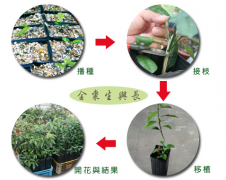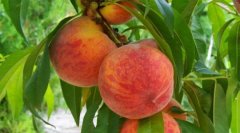How to apply rational fertilization in litchi orchard? Factors to be considered in rational fertilization of Litchi Orchard
Litchi planting is relatively wide, there are many areas have litchi orchards, then litchi planting matters needing attention how to apply rational fertilization in litchi orchards, which problems to consider, let's have a look!
Rational fertilization in litchi orchards must consider the following factors:
(1) Litchi growth habits
Among the nutrient elements, nitrogen is the main component of plant protein, which is most related to the growth of leaves and branches; phosphorus is an important element to promote flowering; proper potassium can inhibit the germination of branches, and potassium is also related to the increase of sugar content in the later stage of fruit; calcium is the structural component of cell wall and fruit cracking; as for magnesium is chlorophyll, the branch becomes smaller when it is lacking, and the sugar content of fruit is low. Therefore, although plants need nutrients such as nitrogen, phosphorus, potassium, calcium and magnesium at all growth stages, generally speaking, branches and leaves are expected to grow rapidly after fruit harvest, with heavier nitrogen and magnesium fertilizer; litchi branches need to stop growing in autumn and winter in order to smoothly enter flower bud differentiation, and more phosphorus and potassium fertilizer are needed; and phosphorus and potassium fertilizer is also important for fruit development and maturation. As for the varieties that are easy to crack fruit, such as glutinous rice, calcium fertilizer should be sprayed to prevent fruit cracking during fruit development. Because the plant requirements of calcium and magnesium are less, this paper pays more attention to the application of nitrogen, phosphorus and potassium fertilizer.
(2) characteristics of nitrogen, phosphorus and potassium in soil
Nitrogen moves quickly in the soil and can be quickly moved to the root surface and absorbed by plants, but it is also easy to lose, while phosphorus moves slowly in the soil and is easily fixed by iron and aluminum, while the moving rate of potassium is between the two. Therefore, nitrogen and potassium fertilizer should be applied many times, while phosphorus fertilizer should only be divided into 1 and 2 times, and ditch application and mixed organic fertilizer should be used to help it move to the root surface as soon as possible.
(3) soil pH (that is, pH value)
Litchi is most suitable for growing in soil pH5.5~6.5, but 32% of the total soil area of agricultural land in Taiwan is below pH5.5, so there are many strongly acidic soils in litchi orchards. In strong acid soil, phosphorus is easy to be fixed, and calcium, magnesium and boron are easy to lack. In addition, the solubility of aluminum is low, and it is easy to cause toxicity to plants. This kind of soil should be improved with lime. The lime commonly used in orchards is CaMg (CO3) 2. Lime should be applied a small amount and applied many times, and should be improved step by step. Do not apply excessive lime at one time. The amount of lime varies according to pH value. The general reference dosage is: pH5.5~ 5.0kg / plot, 40kg / plot, pH5.0 ~ 4.5 / plot, 80kg / plot, 120kg / plot, pH4.5 ~ 4.0 / plot, 120~160kg / plot. The method of application is to evenly sprinkle the organic matter after fruit picking, turn the soil to 0: 30 cm, and sprinkle water to keep the soil moist.
(4) Variety characteristics
Among the litchi varieties, Yuhe Baosheng has the strongest growth, the long spike and the largest number of florets, so it needs more fertilizer than other varieties.
(5) fertilization methods
According to the above principles, the following methods can be used to fertilize litchi:
1. Fertilization should be applied before pruning after fruit harvest, including 3 amounts of nitrogen fertilizer 2 times a year, and 2 amounts of phosphate and potash fertilizer every year. The method of application is to open ditches or radial ditches along the east-west or north-south direction around the crown, and apply the necessary fertilizer to cover the soil. Late-maturing species or central mountain areas may consider applying fertilizer two weeks before harvest to avoid winter shoot germination caused by fertilization too late. The fertilizer should be finished by the end of June.
two。 During the blossom and fruiting period, it is appropriate to apply fertilizer again, including the amount of nitrogen fertilizer 1 to 3, phosphate fertilizer to 2 and potash fertilizer to 4 in the whole year. The method of application is to clean up the leaves or branches under the crown and spread them evenly.
3. At the initial stage of fruit coloring, the remaining 4 amounts of potash fertilizer were evenly applied under the crown, combined with foliar spraying of comprehensive trace elements, which could increase the sugar content and improve the coloring.
At present, compound fertilizer is widely used by many farmers, and it is difficult to apply compound fertilizer in accordance with the above method, but the main points are similar. After harvest and pruning, Taiwan fertilizer No. 43 should be applied before pruning, Taiwan fertilizer No. 43 or Taiwan fertilizer No. 5 should be sprinkled with flowers and fruits, and potassium sulfate or potassium chloride should be applied at the initial stage of fruit coloring.
Because of its high fertilizer demand, Yuhebao has slightly different fertilization methods. Generally, before pruning after fruit harvest and the second shoot extraction after harvest, the blossom and fruit shedding and the physiological fruit drop are respectively applied once containing 4 nitrogen and phosphate fertilizer and 5 potash fertilizer for the whole year, and at the initial stage of fruit coloring, if the compound fertilizer No. 43 of Taiwan Fertilizer is used The amount needed in a year is evenly distributed among the first four times, and some potash fertilizer is also applied at the initial stage of fruit coloring. Except for the first ditch application, the rest of the fertilization methods were adopted and applied.

- Prev

How long does a kumquat tree last? How many times does a kumquat bloom?
Kumquat, you must have eaten this kind of fruit bar, then you know this kind of fruit and a name you do not know Jinzao? Are kumquat and orange grown the same way? Let's take a look together! "Golden jujube" is a nickname for Kumqat in Ilan
- Next

What are the organic cultivation techniques of peach trees? What are the matters needing attention in organic cultivation techniques of peach trees
Fruit trees are perennial crops, and the growth period after planting is as little as several years , and most of them are 50 years. Therefore, the environmental conditions are closely related to fruit tree cultivation. The environment of fruit tree cultivation is roughly related to climate (air temperature, rainfall, sunshine, wind), soil (moisture, ventilation,
Related
- The first cup of black tea in spring, the flavor and history of tea gardens in Kenya, Africa
- The computer can not only choose potatoes, but also grow tea rice. AI will grow winter oolong tea champion.
- It is not only the inflated tea bitten by insects, but also engraved with the four seasons tea in Beipu.
- The Oriental Beauty Tea Festival in Zhuxian County takes the stage at the weekend to experience the plus-size feast of oil tea.
- & quot; Oriental Beauty Tea & Exploration of Emei in Hsinchu, the hometown of quot;
- The new variety of strawberry "Tainong 1" dessert is the first choice with mellow aroma. Crimson gorgeous
- History of Tea in Taiwan: from Wild Inner Mountain to Export Tea Garden
- Two types of Taiwan Oriental Beauty Black Tea won the British three-Star Award for Childhood Tea Xiang Zhang Jiaqi changed from pilot to champion tea maker.
- Banana species and varieties: the planting history of Taiwan Xianren banana and dwarf banana is long, is banana disease resistant?
- Coffee planting Technology: Qianjie Coffee from Seedling to harvesting

